(NLDO) - An extremely long "strange object" emerging from a creek in Iowa, USA, has helped archaeologists find the extinct monster mastodon.
According to Live Science, the hunt for the monster began two years ago, when residents of Wayne County (Southern Iowa) discovered something resembling a bone, extremely large and long, protruding from a creek.
After identifying it as the femur of a mastodon, the search began and recently, a highly intact skull of the beast was revealed.
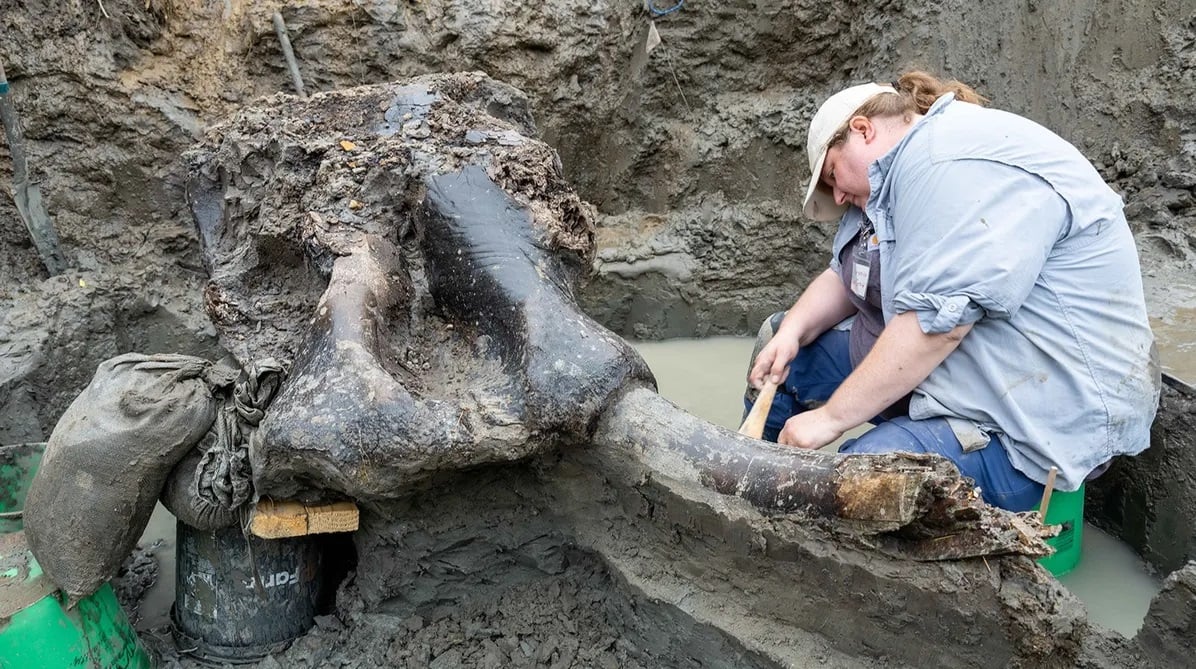
Mastodon skull with partial tusks unearthed in Iowa - Photo: UNIVERSITY OF IOWA
The skull found in Iowa is 13,600 million years old, meaning it existed at a time when the beast was abundant in what is now North America.
Archaeologists are still trying to determine whether this mastodon died at the hands of humans or whether humans interfered with the corpse in any way.
"We really hope to find evidence of human interaction with this creature, possibly arrows and knives used to kill the animal and conduct the initial butchering," said John Doershuk, director of the State Archaeology Office at the University of Iowa (USA).
If the expected traces are found, this ancient beast will not only provide insight into the Ice Age fauna and its species in particular, but also help archaeologists understand more about human activities in the area.
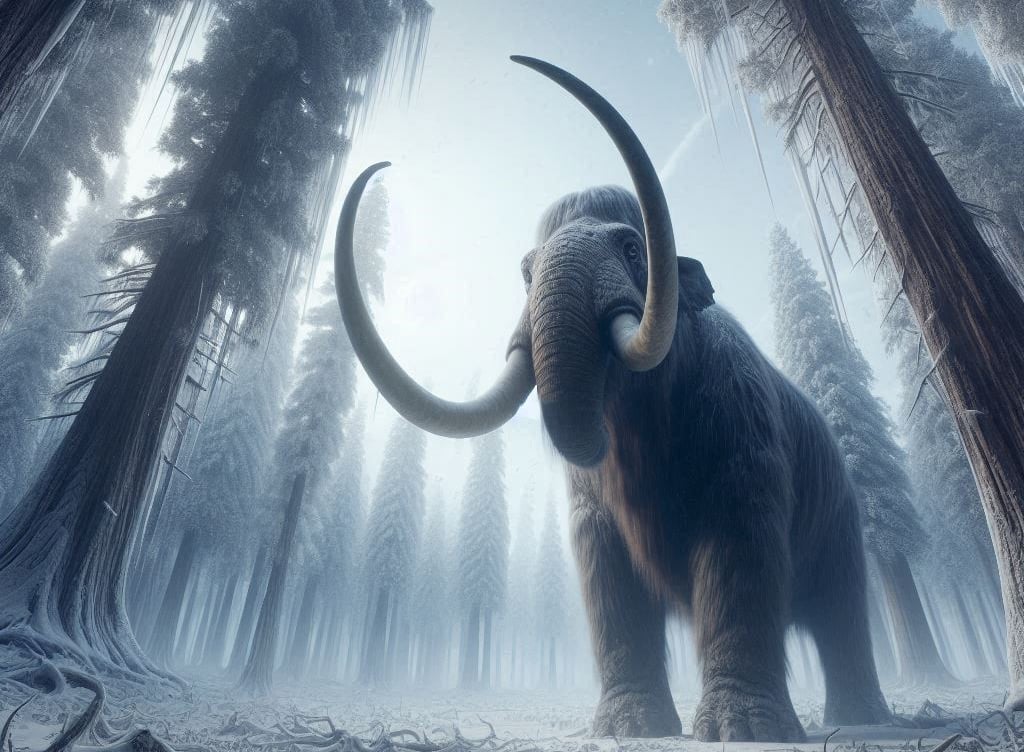
Ice Age Mastodon - AI Illustration: Anh Thu
Mastodon, or "mastodon", was a member of the genus Mammoth that gradually declined and became extinct when the ice age ended.
Mastodon is an extinct large mammal of the genus Mammoth and is closely related to modern elephants.
This lineage of beasts flourished across North America, from present-day Alaska to central Mexico, between 3.5 million and 13,000 years ago. After that, mastodon populations began to decline and eventually went extinct before the end of the last ice age around 11,700 years ago, due to warming climates and overhunting by humans, according to the San Diego Museum of Natural History.
Mastodons weighed an average of 5.5 tons, making them smaller than the famous woolly mammoths of the Ice Age and only about the size of modern African elephants. However, the fossils of this species are notable for their impressive pair of tusks.
Source: https://nld.com.vn/hai-hung-quai-thu-13600-tuoi-nho-dau-len-tu-lach-nuoc-196240821164119753.htm






![[Photo] Closing of the 11th Conference of the 13th Central Committee of the Communist Party of Vietnam](https://vstatic.vietnam.vn/vietnam/resource/IMAGE/2025/4/12/114b57fe6e9b4814a5ddfacf6dfe5b7f)








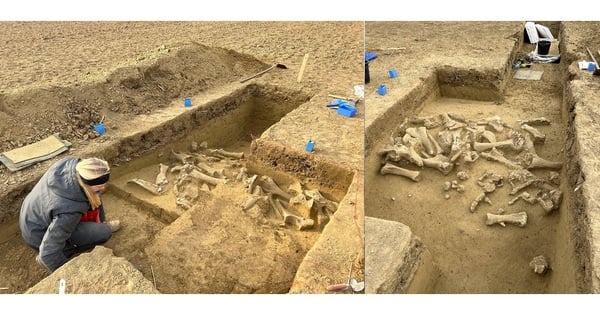
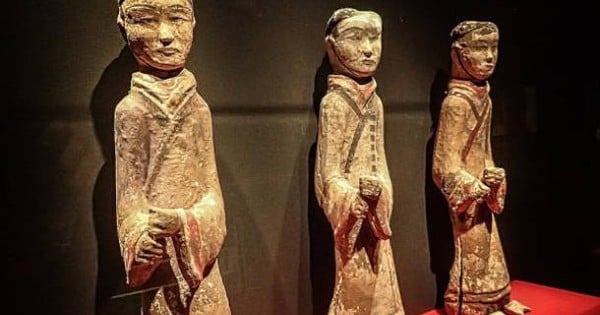

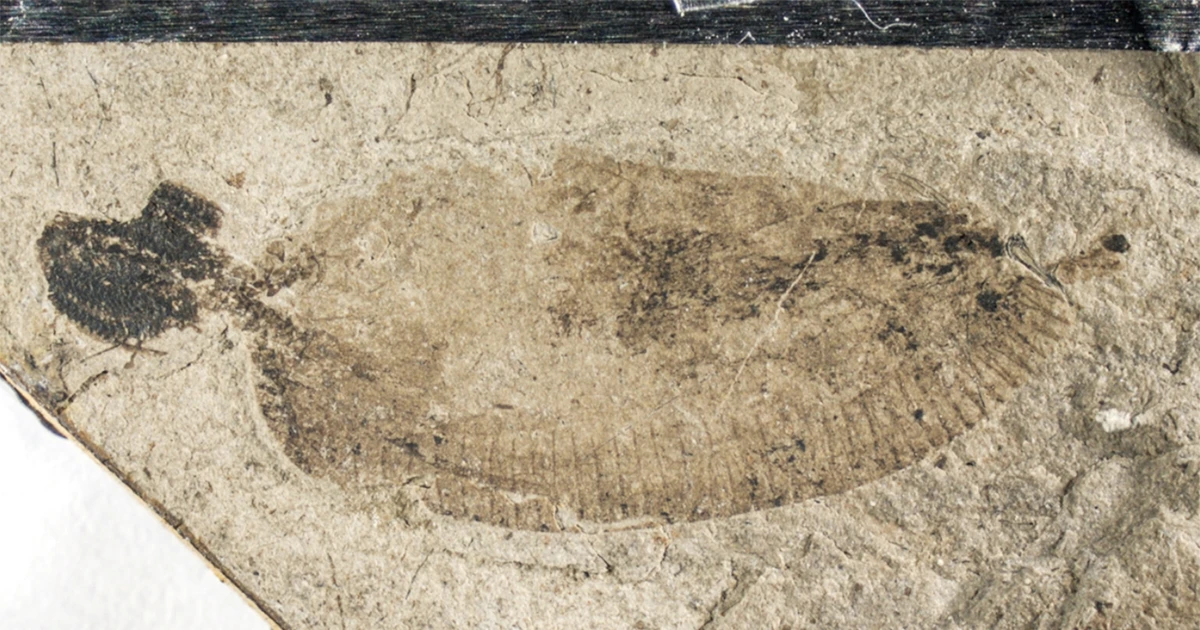













![[Photo] Overcoming all difficulties, speeding up construction progress of Hoa Binh Hydropower Plant Expansion Project](https://vstatic.vietnam.vn/vietnam/resource/IMAGE/2025/4/12/bff04b551e98484c84d74c8faa3526e0)

































































Comment (0)